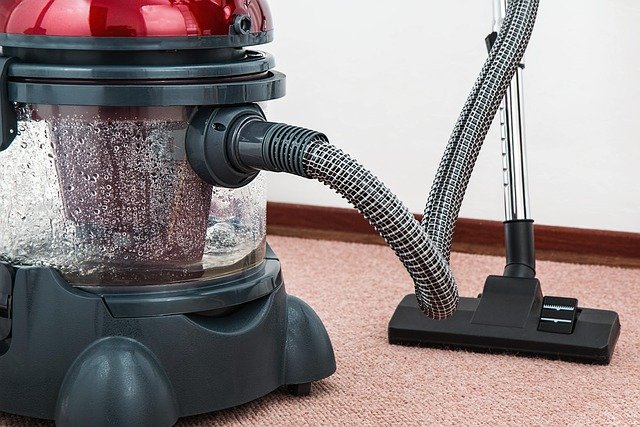Duct Cleaning Tips to Boost Indoor Air and HVAC Efficiency
Dust, pet dander, and debris can accumulate inside hidden ductwork, reducing HVAC performance and affecting indoor air quality. Learn when duct cleaning is worthwhile, what professional services include, and how cleaning fits into a larger strategy with proper filtration, sealing, and maintenance to keep homes and commercial spaces healthy and efficient. Keywords: air duct cleaning, indoor air quality, HVAC efficiency, duct maintenance.

Air Duct Fundamentals and Their Importance
Air ducts are the enclosed passages that carry heated or cooled air from an HVAC system to rooms throughout a building. Over months and years, particles like dust, pet dander, fibers, and other debris collect on duct surfaces. This buildup can impede airflow, increase the workload on fans and motors, and create niches where allergens or microbes concentrate. Regular visual inspections help identify heavy accumulation, visible contamination, or structural problems that may require professional service.
Because most ductwork is concealed behind walls, ceilings, or in crawlspaces, issues frequently go unnoticed until comfort or system performance declines. Well-designed, properly installed, and maintained ducts promote consistent temperatures, reduce wear on HVAC components by preventing restricted airflow, and support overall system efficiency. Factors such as intact seals, adequate insulation, and correctly sized duct runs are integral to the system’s effectiveness.
What Professional Duct Cleaning Entails
A full-service duct cleaning typically starts with an assessment of the system’s condition. Technicians then use controlled agitation tools—such as rotary brushes, air whips, and other mechanical devices—to loosen dust and debris inside the ducts. High-powered vacuums capture dislodged material to prevent re-contamination of rooms. Registers and grilles are removed and cleaned, and related components like the blower assembly and evaporator coils may be inspected and serviced as part of a thorough approach.
A key aspect of effective cleaning is containment: professionals should ensure dust and particles are drawn into the vacuum collection system rather than allowed to escape into occupied spaces. Choosing trained providers who follow established industry practices reduces the risk of damage to ductwork, connectors, or insulation. Before scheduling service, homeowners should request a clear description of the methods, tools, and containment procedures technicians will use.
How Cleaning Influences HVAC Performance
Removing substantial dust and debris can restore freer airflow and reduce strain on HVAC fans and blowers. When air moves more easily, the system may reach target temperatures with fewer on/off cycles, supporting steadier comfort and potentially reducing energy use. In systems with significant contamination, cleaning can sometimes produce measurable improvements in energy consumption, though results depend on the system’s starting condition and the extent of the buildup.
It’s important to note that duct cleaning is not a replacement for necessary repairs, regular filter changes, or equipment upgrades. Ongoing efficiency depends primarily on proper filtration, duct sealing, and routine HVAC maintenance. Pre- and post-cleaning measurements—such as airflow or static pressure readings—can help quantify any improvements and identify additional work needed to sustain gains.
Health Considerations of Dusty Ducts
Dust in ducts can harbor common allergens like pollen, pet dander, and dust mite fragments, which may worsen symptoms for people with allergies or asthma in some environments. Visible mold growth, persistent musty odors, or evidence of pests within ductwork are more serious concerns that often require remediation beyond simple cleaning. While duct cleaning can reduce certain particulate loads circulating through the ventilation system, it does not solve all indoor air quality problems on its own.
This article is informational and not medical advice. Individuals with respiratory conditions should consult both a healthcare provider and an indoor air quality professional to determine whether duct cleaning could meaningfully reduce triggers in a particular setting.
Can Duct Cleaning Improve Indoor Air Quality?
Duct cleaning can be a useful element of a broader strategy to improve indoor air quality, but it works best in combination with other measures. Proper filtration, source control (eliminating or reducing pollutant sources), humidity management, and adequate ventilation typically produce larger and longer-lasting benefits. Removing built-up dust and debris helps limit re-entrainment of particles into living spaces, especially when high-efficiency filters suited to the HVAC system are in use.
One-time cleaning won’t fix problems caused by ongoing sources such as smoking, chemical off-gassing from materials, or inadequate ventilation. Decisions about cleaning should be guided by inspection results, occupant sensitivities, and observed system performance. Regular filter replacement, resolving moisture issues, sealing leaky ducts, and maintaining balanced ventilation often deliver more sustained indoor air quality improvements than a single duct cleaning event.
Conclusion
Duct cleaning can play a helpful role in maintaining HVAC efficiency and reducing some airborne particulates—particularly when there is visible contamination, mold, or pest activity. It should be considered one component of a comprehensive maintenance and indoor air quality plan that includes proper filtration, routine HVAC servicing, sealing and insulation of ducts, and source-control measures. The best course of action is determined after inspection and discussion with qualified service professionals who can recommend appropriate follow-up and complementary measures.






